6 Tips to Harvest Mint (And What to Avoid)

This post follows our research editorial guidelines.

After growing your mint plant over the past few months, you’re ready to start harvesting it to use either in your recipes or as a safe insect repellent to use in your garden. But you want to make sure you’re harvesting it correctly to avoid damage.
When it comes to harvesting mint, I, unfortunately, learned the hard way of what NOT to do, so I want to share some tips with you on how to harvest mint appropriately (and what you should avoid) so it can last for seasons to come.
The easiest way to harvest mint is to do so before it reaches full maturity so it has the most flavor. This means plucking the leaves about 45 days after first planting them. However, this is just one of the many ways you can harvest mint. Continue reading to learn more about harvesting mint, as well as what you should avoid when doing so.
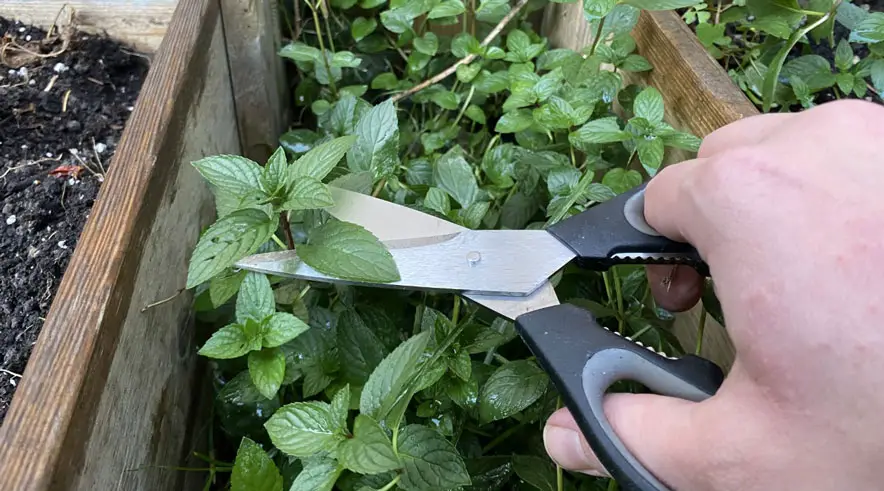
Table of Contents
Tips
Here are the top 6 tips you should keep in mind when harvesting your mint plant:
1. Pick Your Mint Leaves in the Morning
You should not only water your mint plants first thing in the morning, but you should also harvest them around this time, as well.
It’s not uncommon for your mint plants to have a thin layer of dew on them first thing in the morning. If you wait too long to pluck them, this excess moisture could rot the leaves, making them no longer safe to consume.
This tip generally applies to mint plants growing outdoors but may apply to the inside plants, as well, depending on the conditions inside your home.
2. Pick Your Mint Right Before It Flowers
Holding off until just before your mint flowers means that you’ll end up with the most flavor possible. This is because the oils that make up the flavor tend to be the most concentrated at this point, ensuring that you’re getting plenty of flavor out of each and every leaf. Otherwise, the flavor could be mild and cook out when it comes time to use it.
Mint tends to flower in the summer so keep an eye out for those tiny blossoms. If you miss it and your mint flowers before you’ve had a chance to harvest the leaves, cut the flower off. This way, the plant will use more of its energy to grow leaves instead of growing flowers.
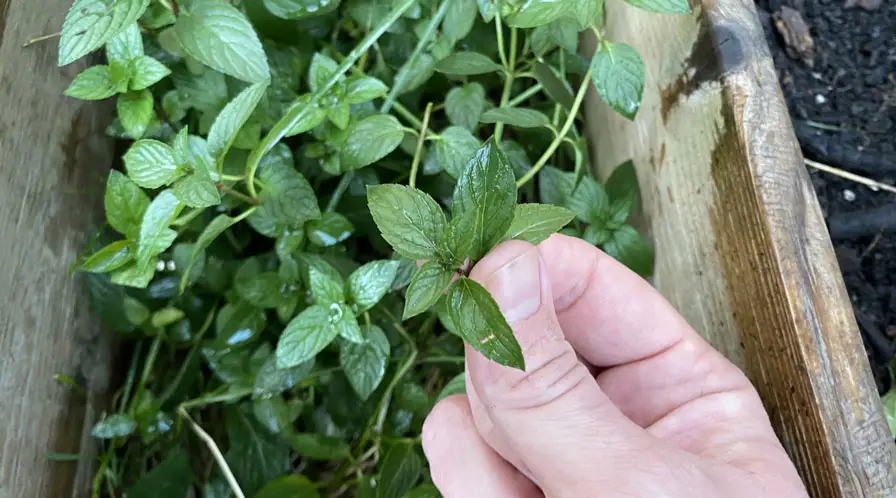
3. Maintain Their Height
Mint plants can grow up to be between 1-2’ tall, but you won’t want to have them be that high when it comes to harvesting them.
When you’re ready to harvest your mint leaves, grab a pair of shears and trim the stems down to about 5 inches.
This allows you to have another bountiful mint leaf harvest in the future as opposed to just cutting down all the leaves and stems at once. Best of all, you can do this twice a season.
4. Check For Diseases Before Your Harvest
Unfortunately, you can never just assume that your mint is ready to pluck. You should always check for both pests and diseases first.
The easiest thing to do is look for signs of disease, such as stem or leaf discoloration or a condition known as rust. If you notice these things on your mint plant, then it’s not safe to harvest and consume. Though mint is a natural pest deterrent, it can still fall victim to thrips and loopers, so it’s best to be mindful of these things before plucking your mint leaves.
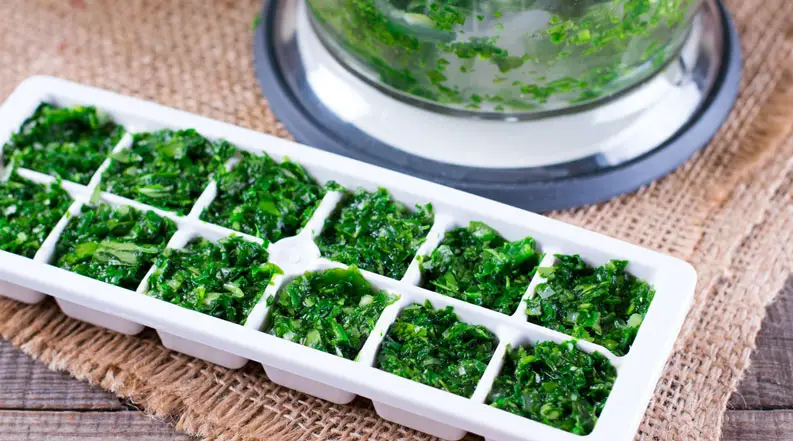
5. Prepare for Storage
If you plan on harvesting your mint to use at a later date, you should start the prep work now that way you’re all set to go when it comes time to harvest. Before it can be stored away, mint needs to be dried out.
To do this, it’s recommended that you hang the loose stems upside down in a well-ventilated, dry, and warm area. This is done by tying a string to each of the stems and hanging them in such a way that the leaves don’t crowd each other.
This provides proper airflow to help them dry. Don’t air them out in the sun, as this will actually reduce flavor and potentially lead to mold growing on your leaves.
However, it’s not enough to simply prepare your mint for storage once it’s harvested. You also need to know how long you can store it for.
Fresh mint may be stored for a week in water in the refrigerator.
Dan Drost, vegetable specialist from Utah State University
This gives you all the time you need to gather up the ingredients you need to create new meals that involve mint leaves. Just be sure you’re using a sealed, airtight container to help preserve your mint leaves’ freshness.
6. Harvest it Often
Mint can grow pretty fast, especially when given enough sunlight and water. This is one of the big reasons why both farmers and plant lovers alike love to grow mint because it continually yields a large crop. Plus, when planted near other crops/plants, they can ward off harmful bugs and insects.
If your mint is harvested regularly, you can maintain its flavor and aroma – which is exactly what you want! After all, mint is typically grown and used for its flavor.
Allowing your plant to flower or go to seed can actually do more harm than good if you’re planning on using your mint in a recipe. While it can be a very pretty plant when it flowers, this also means you’ve missed the window for when the leaves are at their strongest.
However, if you harvest on a regular basis, this shouldn’t be an issue, especially because the more you harvest, the more your mint plant will grow. It’s kind of like that analogy of trimming your hair to help it grow faster – only in this case, the proof is actually there!
These tips are just a few of the ones you should use to harvest your mint plant, regardless of what it’s blooming inside your home or in your garden.
How Do You Harvest Mint Without Killing the Plant?
We covered the basics regarding how to harvest mint, but how can you do so without killing the plant you’ve dedicated so much time to nurture? There are a few steps you can take:
- Don’t pull off the leaves: It’s very common for people to pull the leaves of basil and mint plants, but if you want to avoid killing it, make sure you don’t do this. When you pull the leaves off the plant, you unintentionally damage the stem. Furthermore, you may end up depleting the mint leaf of its flavor once it gets crushed in your hand.
- Remove only what you need: If your recipe only calls for three mint leaves, don’t pull off seven just because you can. One, as mentioned above, this can damage your plant, but two, excessive harvesting can cause your mint plant too much stress, which will stunt its growth. A good rule of thumb is to never take more than ⅓ of the plant’s leaves at any given time, so as to ensure a strong, healthy, and vivacious mint plant.
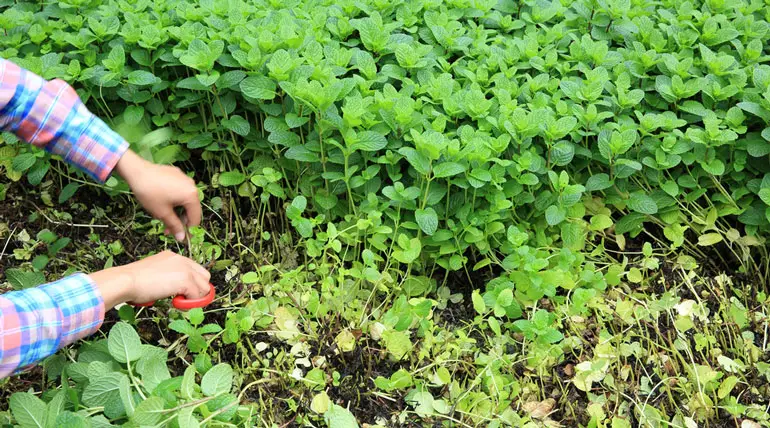
- Leave the knife in the drawer, use the scissors instead: Chances are you’re probably already going to use scissors or plant shears to remove the leaves off your mint plant. But, if you didn’t intend to, we got to you just in time. Scissors and shears allow you to make a nice clean break. A knife doesn’t do that. Instead, when used, it breaks the stem and causes damage. Remember, the stem is how your mint plant gets all the necessary oxygen and nutrients it needs to survive, so any damage to the stem can prove fatal.
While this is not an exhaustive list, these are just a few of the easy ways you can harvest your mint plant without harming it. But, if you do harm it in any way, keep in mind that as long as the damage to the plant’s roots is limited, chances are it can still be saved over the course of the next few weeks.
Does Mint Grow Back Every Year?
Yes, it does. Mint is considered to be a perennial plant, meaning that it grows back every spring, much like other common plants around your home such as purple coneflowers and Chrysanthemums. This is in contrast to an annual plant, which dies off during the winter season and requires re-planting with a brand new plant the following spring.
Though mint does prefer to grow in sun and partial shade, it is extremely durable during the winter season, even when it’s exposed to frost. Like most perennial plants, your mint will go dormant for the duration of the cold-weather season. So, on the surface, it may look like the plant is dead but the roots beneath the soil are alive and well, ultimately keeping your plant alive.
Once the weather gets warmer, the mint plant will usually resume its normal growth patterns. However, there are some caveats to this. Mint planted at the start of the winter season may not be able to survive the harshness of the season simply because it hasn’t been around long enough yet.
Likewise, if your soil isn’t rich enough or the mint plant isn’t buried deep enough, the roots may fall victim to frost and die. If this happens, it’s unlikely your mint plant will survive the winter and come back in the spring. If you want to avoid this, plant your mint plant in the spring so the roots have enough time to grow once winter rolls around.
When is Mint Ready to Harvest?
Like how it is with most plants, you want to avoid harvesting mint before it’s ready. Generally speaking, the ideal time to harvest mint is right before the flowers begin to sprout. On average, mint plants take about 90 days to reach maturity, so you’ll want to start harvesting leaves about midway through their growth spurt.
Why, though? Wouldn’t it be better to harvest your mint leaves once it’s reached maturity? It’s a common thought but the answer is no and here’s why: once a mint plant reaches maturity and starts developing flowers, the overall flavor of the mint starts to dwindle. By harvesting the leaves while they’re young, you can get the most flavor out of them. After all, the mint flavor is usually why people plant and grow mint in the first place!
Final Thoughts
If you are getting ready to harvest your mint plant, it’s crucial that you understand all the ways in which you can do this safely and effectively. These tips are sure to help!
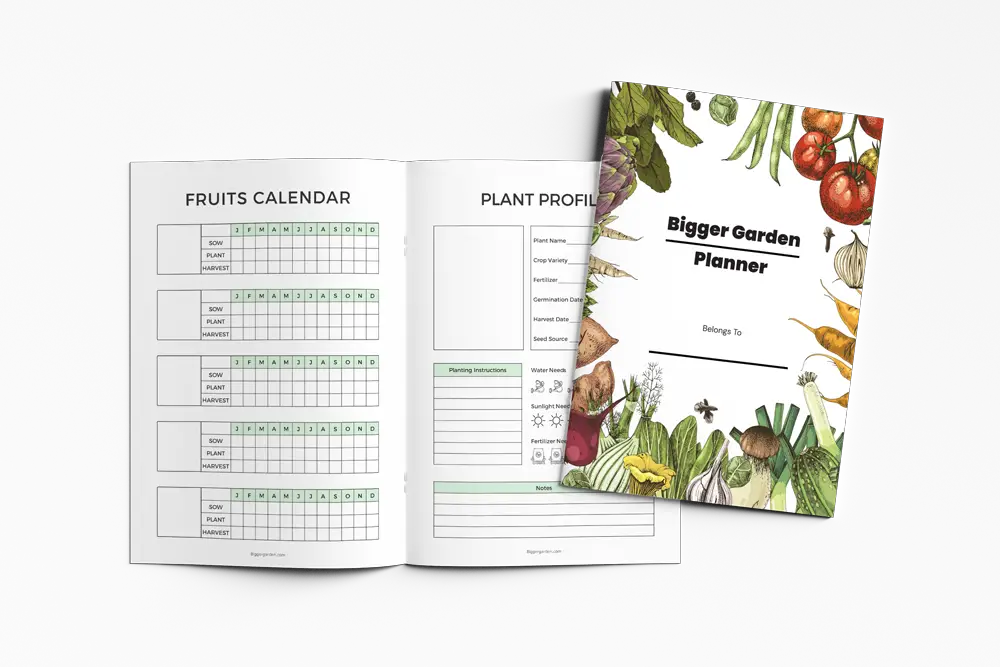
Before you go!
How Long Do You Soak Air Plants? A Complete Watering Guide
Dragon Fruit Plant Care: The Complete Growing Guide
Can You Grow a Maple Tree as a Bonsai?
7 Common Peace Lily Pests and Diseases + How To Prevent Them